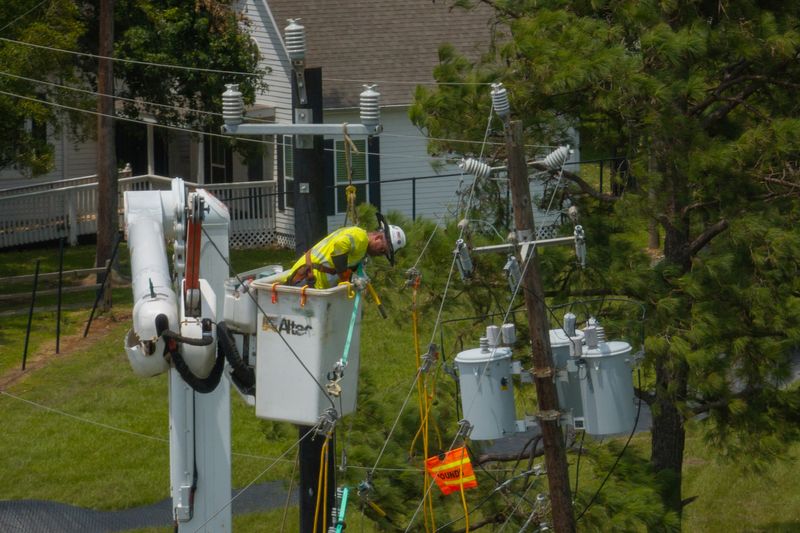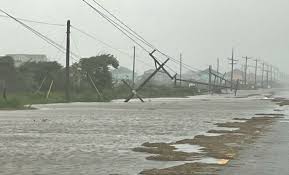HOUSTON (Reuters) – Nearly a million homes and businesses in Texas remained without power on Friday, five days after Hurricane Beryl hit with fierce winds and rain, toppling trees and damaging electricity infrastructure.
CenterPoint Energy, the largest power provider in Texas, reported about 860,000 customers were still affected. The company has already restored power to over 1.4 million customers since Beryl’s landfall.
Utility Entergy said Texas restoration crews had restored power to about 183,000 of the 252,460 customers impacted by the hurricane as of Friday afternoon. Entergy expects full restoration by Monday, with 75% of customers expected to have power back by the end of Friday.
Frustrations are mounting among residents as Houston temperatures rise, with the Heat Index exceeding 100 degrees Fahrenheit (38 Celsius). Some businesses remain closed due to power outages, and residents have been forced to discard hundreds of dollars’ worth of groceries.
“The recent hurricane was only a Category 1. We will likely face more hurricanes, and they could be stronger. Are we going to have the same problems?” asked Soonkack Kook, founder of a coffee shop in midtown Houston, in an Instagram post.
Meteorologists at Colorado State University this week raised their forecast for the severity of the 2024 hurricane season, calling Beryl a harbinger of an active season. They now anticipate six major storms, up from an earlier forecast of five.
Beryl was the earliest Category 5 storm on record but hit the Texas coast as a Category 1 storm with winds around 80 miles per hour (130 kilometers per hour).
Kook’s coffee shop has opened a pop-up outside as it has not had power for five days. CenterPoint Energy continues to work around the clock, expecting to restore 80% of impacted customers by Sunday. Crews have replaced over 2,000 poles and addressed damage from more than 6,000 trees.
Local residents without power have sought hotels and vacation rentals, but options are limited and often expensive. Some are considering leaving town for the weekend due to the heat and lack of power.
A study last year by the U.S. Department of Energy indicated that the median home in Houston would be habitable for four days during a heat event without power. “When you lose air conditioning, the temperatures indoors get dangerous much more quickly in homes that are not well-insulated,” said Lowell Ungar, director of federal policy for the American Council for an Energy-Efficient Economy.
Beryl made landfall on Monday near Matagorda Bay in South Texas, only about 40 miles (64 km) from Freeport, Texas, home to the country’s third-largest liquefied natural gas facility and numerous chemical plants. Freeport LNG powered down in preparation for the hurricane and has not yet resumed production.
Chemical maker Dow reported process instability and reduced production rates due to the storm. Dow’s Texas sites are running with some limitations due to power infrastructure issues in Freeport.
Another chemical company, Olin, declared force majeure on Wednesday for some products after Beryl damaged its Freeport facilities. BASF’s Texas facilities experienced minimal impact and are working to resume normal operations. Formosa Plastics temporarily shut down operations at its Point Comfort plant but expects normal operations by next week.
Ports along the Gulf Coast, which had closed ahead of the hurricane, largely resumed operations and vessel traffic.

The impact on refineries and offshore production platforms was limited.
Original Story at www.investing.com
